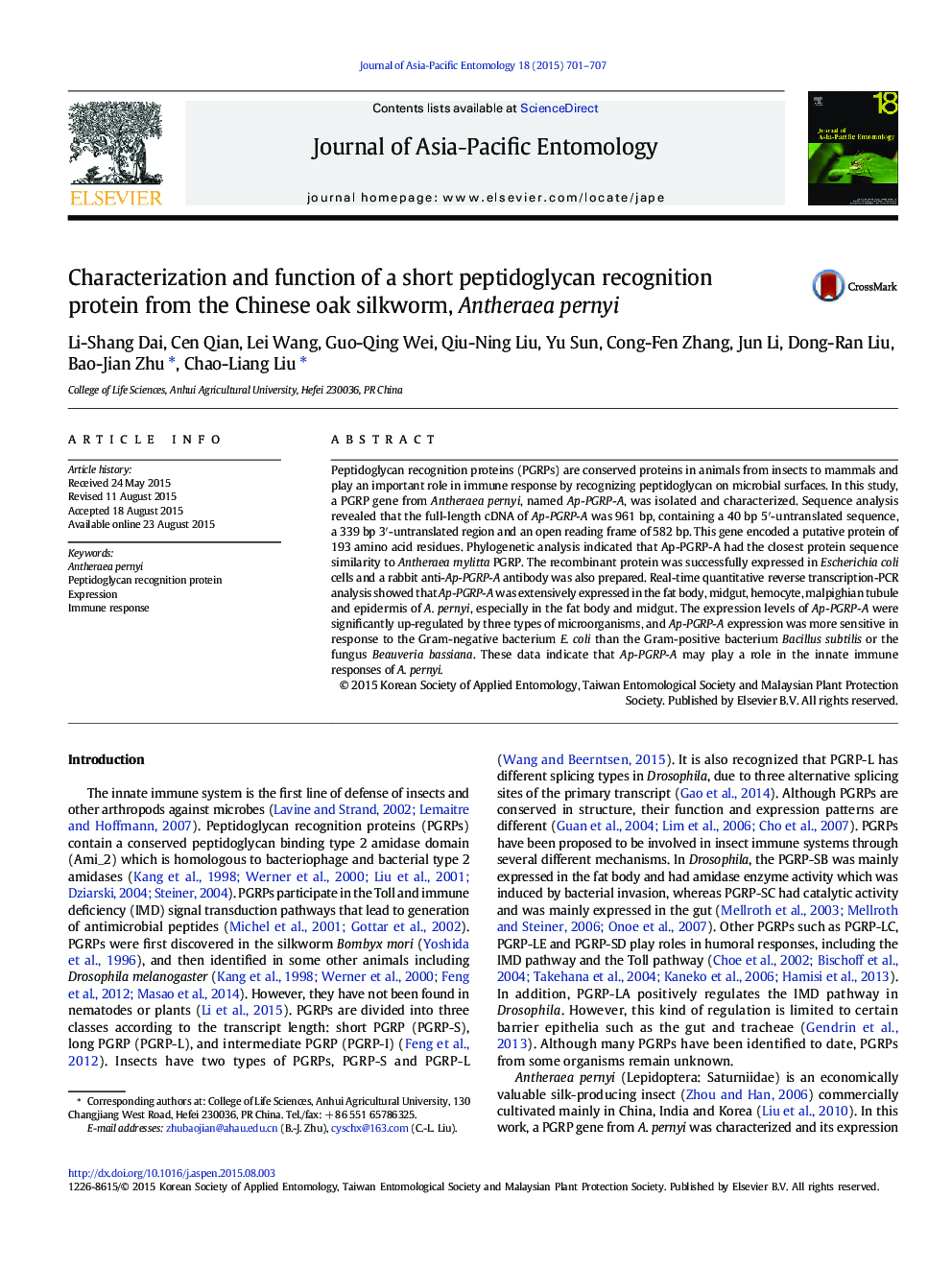| Article ID | Journal | Published Year | Pages | File Type |
|---|---|---|---|---|
| 4524396 | Journal of Asia-Pacific Entomology | 2015 | 7 Pages |
•A new peptidoglycan recognition protein was identified from A. pernyi.•Ap-PGRP was highly expressed in the fat body of A. pernyi.•This expression Ap-PGRP was up-regulated by bacteria and fungi challenges.
Peptidoglycan recognition proteins (PGRPs) are conserved proteins in animals from insects to mammals and play an important role in immune response by recognizing peptidoglycan on microbial surfaces. In this study, a PGRP gene from Antheraea pernyi, named Ap-PGRP-A, was isolated and characterized. Sequence analysis revealed that the full-length cDNA of Ap-PGRP-A was 961 bp, containing a 40 bp 5′-untranslated sequence, a 339 bp 3′-untranslated region and an open reading frame of 582 bp. This gene encoded a putative protein of 193 amino acid residues. Phylogenetic analysis indicated that Ap-PGRP-A had the closest protein sequence similarity to Antheraea mylitta PGRP. The recombinant protein was successfully expressed in Escherichia coli cells and a rabbit anti-Ap-PGRP-A antibody was also prepared. Real-time quantitative reverse transcription-PCR analysis showed that Ap-PGRP-A was extensively expressed in the fat body, midgut, hemocyte, malpighian tubule and epidermis of A. pernyi, especially in the fat body and midgut. The expression levels of Ap-PGRP-A were significantly up-regulated by three types of microorganisms, and Ap-PGRP-A expression was more sensitive in response to the Gram-negative bacterium E. coli than the Gram-positive bacterium Bacillus subtilis or the fungus Beauveria bassiana. These data indicate that Ap-PGRP-A may play a role in the innate immune responses of A. pernyi.
Graphical abstractFigure optionsDownload full-size imageDownload as PowerPoint slide
